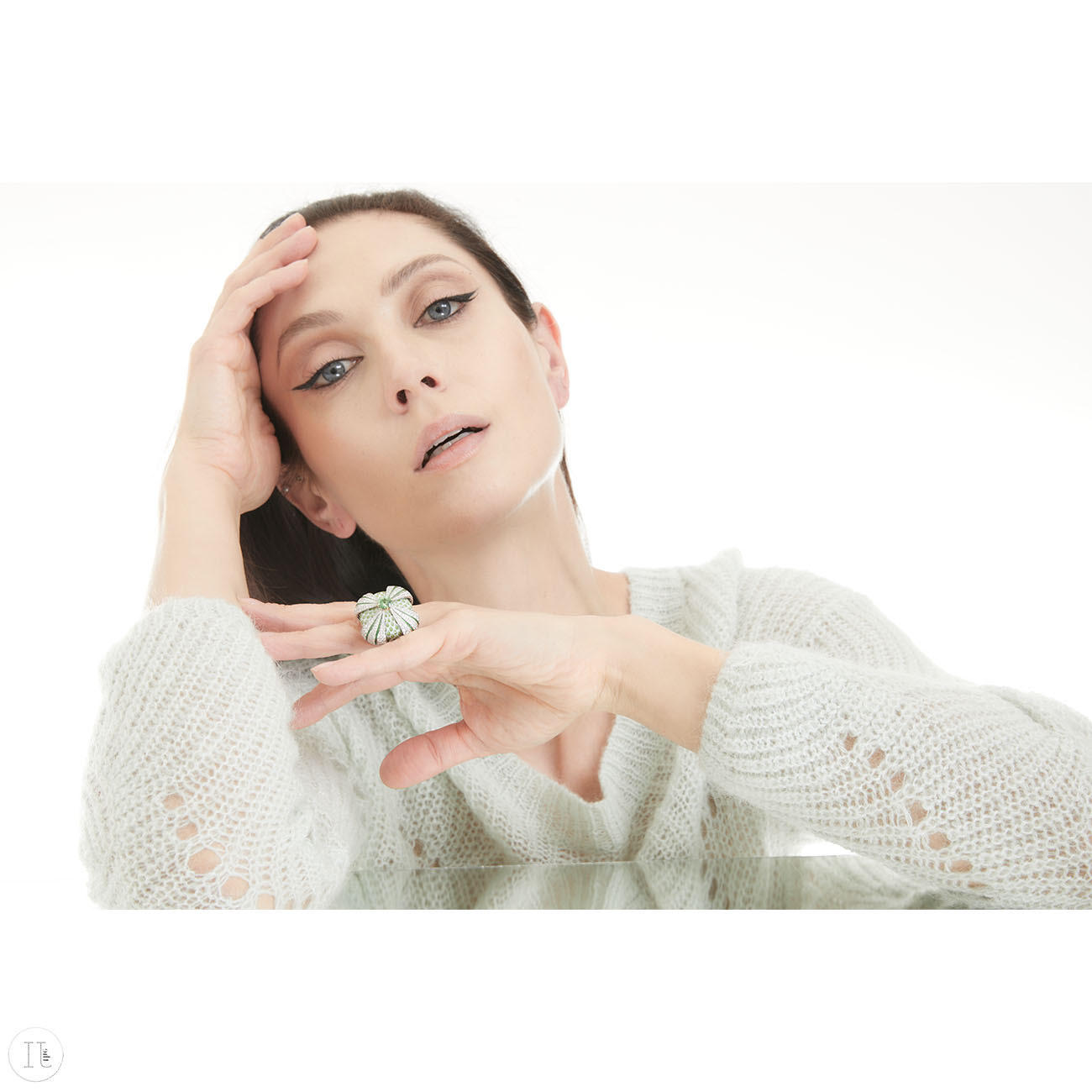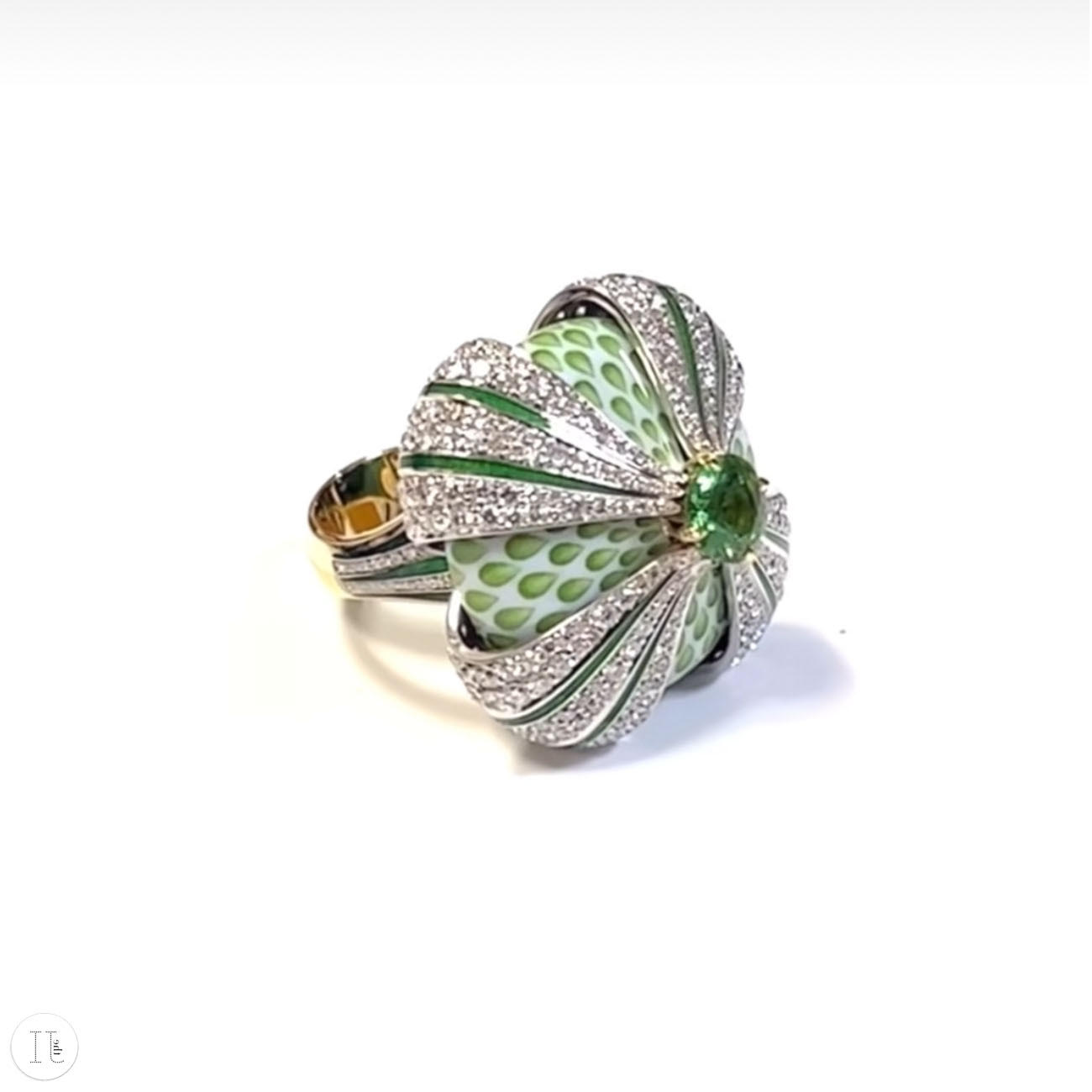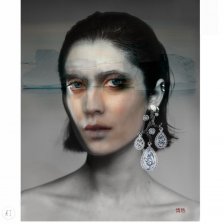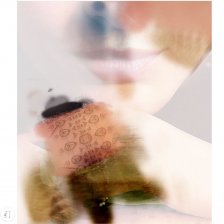PEELING BACK THE LAYERS OF ART: ONION RING BY ILGIZ FAZULZYANOV
In the onion, there is beauty,
Pablo Neruda, Ode to the Onion
there is poetry,
there is body and spirit,
there is a man, and there is a woman.
Ilgiz Fazulzyanov is known for using unexpected sources of inspiration: curious creations and creatures of nature, eloquent facts of history, remarkable pieces of art, moving lines of poetry.
This time it was an onion.
More specifically, an onion flower bud: a gentle creation, far from the pungent bitterness of the underground bulb.
The complex, multilayer structure, using the technique of annealing to paint on its voluminous surface, with the vivaciously green tsavorite as the centre stone, was brought to life through a laborious, sweat-inducing (both metaphorically and literally) process.
Sophisticated enamel work is partially covered by thin arches of delicate diamond pave, layering secrecy and enigmatic attraction.
Ilgiz Fazulzyanov has a keen eye for beauty and deep appreciation for the world around him, which he expresses through his unique creations. Throughout his artistic journey, he turned to his native Tatar culture, and its traditional motifs and symbols; to the beauty of the human form and the emotions it conveys; and to his travels to different parts of the world.
On his travels to India, Ilgiz was struck by the vibrant colors and complex patterns found in traditional Indian textiles, reflected by his masterful inclusion of bright gemstones and delicate gold filigree work.
During a trip to Thailand, Ilgiz was captivated by the beauty of the lotus – an important symbol in Thai culture; he created a series of pieces featuring petals of the flower, using enamel to capture its elegant color variations.
In Morocco, he discovered a type of blue enamel traditionally used in the decoration of mosques, and employed this in pieces noted for their geometric design and refined details typical of Moroccan architecture.
In Japan, Ilgiz was inspired by the minimalist aesthetic of local design, subsequently creating a collection characterized by simple, clean lines and subtle use of color, evoked by the Japanese concept of wabi-sabi – the acceptance of transience and imperfection.
In Turkey, he fueled his creative muse with the history and cultural heritage of the Ottoman Empire, which he later captured in a series of jewelry pieces that used intricate arabesque patterns and traditional Ottoman motifs, combining gold and enamel to capture the richness and beauty of Turkish design.
By contrast with these faraway lands, the inspiration for the inimitable Onion Ring was found much closer to this incredible jeweler’s home.
This once again proves that beauty is everywhere. But it takes a true artist to notice it, peel and deconstruct its layers, and then reassemble them into a masterpiece.





